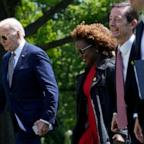WWE Star Great Khali's Growth-Inducing Tumor Removed
A WWE star had surgery to remove the dangerous tumor causing his huge size.
July 29, 2012— -- World Wrestling Entertainment star Dalip Singh, better known by his ring name The Great Khali, underwent surgery Wednesday to remove a tumor that caused his huge size.
At 7-foot-1 and weighing 347 pounds, Singh, a former police officer in India's Punjab province, made his WWE debut in 2006, and won the World Heavyweight Championship belt just a year later. But while his dimensions have earned him celebrity status, they are the result of a tumor that likely triggered long-term complications for his health.
The benign tumor developed on Singh's pituitary gland, a tiny gland at the base of the brain that produces growth hormone. The tumor caused excessive secretion of the hormone, leading to a condition known as acromegaly, which causes gigantism if the tumor is active before puberty and can be fatal if left untreated, said Dr. Joshua Cohen, an endocrinologist at George Washington University.
Despite the surgery on Wednesday, Singh, 39, is at greater risk of facing health problems such as diabetes, hypertension, heart disease and even poor vision if the tumor came into contact with the nearby optic nerves, Cohen said. In 1993, star wrestler Andre the Giant, who stood at 7 feet and 5 inches, and weighed 500 pounds, died at age 46 of congestive heart failure caused by acromegaly.
Susan Manko, a spokeswoman for University of Pittsburgh Medical Center, where Singh was operated on, said Singh was "recovering well in the hospital" and is expected to be released by Monday. Singh has declined to speak to reporters until then, Manko said.
The signs of Singh's acromegaly are instantly obvious, said Dr. Glenn Braunstein, an endocrionologist and chair of the medicine department at Cedars-Sinai Medical Center in Los Angeles — raising the questions, he added, of whether and for how long WWE knew about it, and whether treatment was put off because Singh's surging growth hormone levels were helping him become one of the most formidable wrestlers in the nation.
"The prominent eyebrows, the bulbous nose, the chin protruding, the massive ears — this is quite typical of patients with acromegaly," said Braunstein, who said he could make a clear diagnosis based on the few seconds it took him to conduct a Google image search.
WWE identified Singh's acromegaly at some time prior to his surgery through its Wellness Program, a WWE official said on condition of anonymity because he was not authorized to speak to the press about Singh.
Singh and Andre the Giant — whose real name was Andre Roussimoff and who may be best remembered for his acting role as the giant Fezzik in "The Princess Bride" — are far from the only high-profile wrestlers to have reaped benefits from acromegaly.
Italian boxing and wrestling champion Primo Carrera died in 1967 at age 59 of diabetes, determined years later to be a complication of acromegaly.
Antonio Silva, a Brazilian mixed martial artist and Ultimate Fighting Championship fighter, was suspended from fighting for a year because he tested positive for steroids that his coach said were needed to boost his testosterone levels, abnormally low as a result of his acromegaly.




